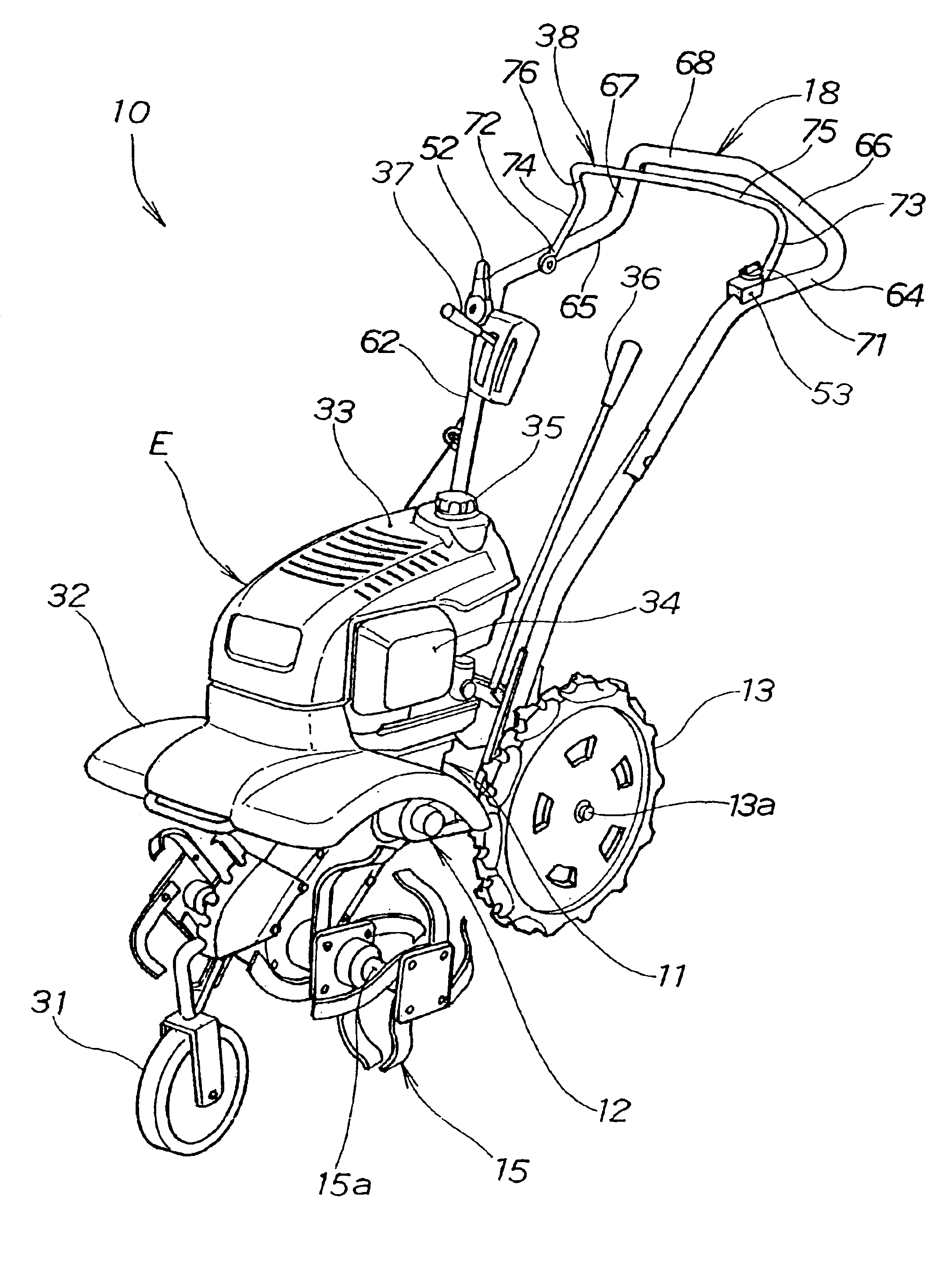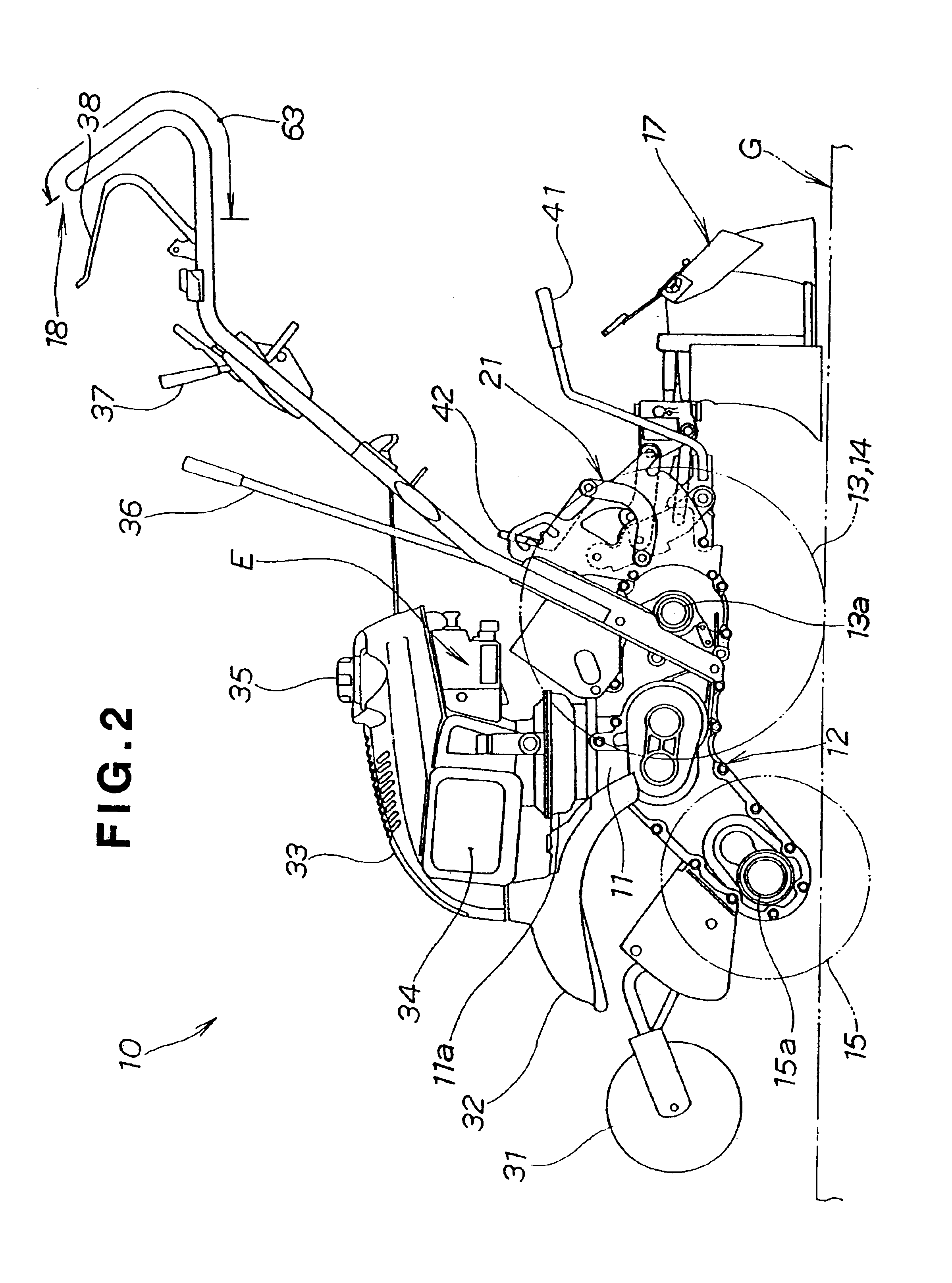Walk-behind tiller
a technology of walking behind and forming a handle, which is applied in the direction of agricultural machines, cell components, adjusting devices, etc., can solve the problems of increasing production costs, increasing the number of components, and difficulty in reducing production costs, so as to improve the operability
- Summary
- Abstract
- Description
- Claims
- Application Information
AI Technical Summary
Benefits of technology
Problems solved by technology
Method used
Image
Examples
Embodiment Construction
A walk-behind tiller (hereinafter referred to merely as a “tiller”) 10 according to the present invention shown in FIGS. 1 to 3 includes a body 11, an engine E provided on the body 11, a power transmission 12 mounted to the body 11, left and right travel wheels 13, a tilling device 15, and an operating machine such as a ridger 17 provided behind the travel wheels 13, for tilling agricultural field with the tilling device 15 while furrowing. The power transmission 12 transmits power generated by driving of the engine E to the left and right travel wheels 13 and to the tilling device 15.
As shown in FIG. 2, the power transmission 12 is mounted below a clutch case 11a containing a clutch provided below the engine E. The tilling device 15 is rotatably mounted to the front of the power transmission 12 via a rotor shaft 15a. The left and right travel wheels 13 are rotatably mounted to the rear of the power transmission 12 via an axle 13a. A handle 18 obliquely extends from the rear of the ...
PUM
 Login to View More
Login to View More Abstract
Description
Claims
Application Information
 Login to View More
Login to View More - R&D
- Intellectual Property
- Life Sciences
- Materials
- Tech Scout
- Unparalleled Data Quality
- Higher Quality Content
- 60% Fewer Hallucinations
Browse by: Latest US Patents, China's latest patents, Technical Efficacy Thesaurus, Application Domain, Technology Topic, Popular Technical Reports.
© 2025 PatSnap. All rights reserved.Legal|Privacy policy|Modern Slavery Act Transparency Statement|Sitemap|About US| Contact US: help@patsnap.com



